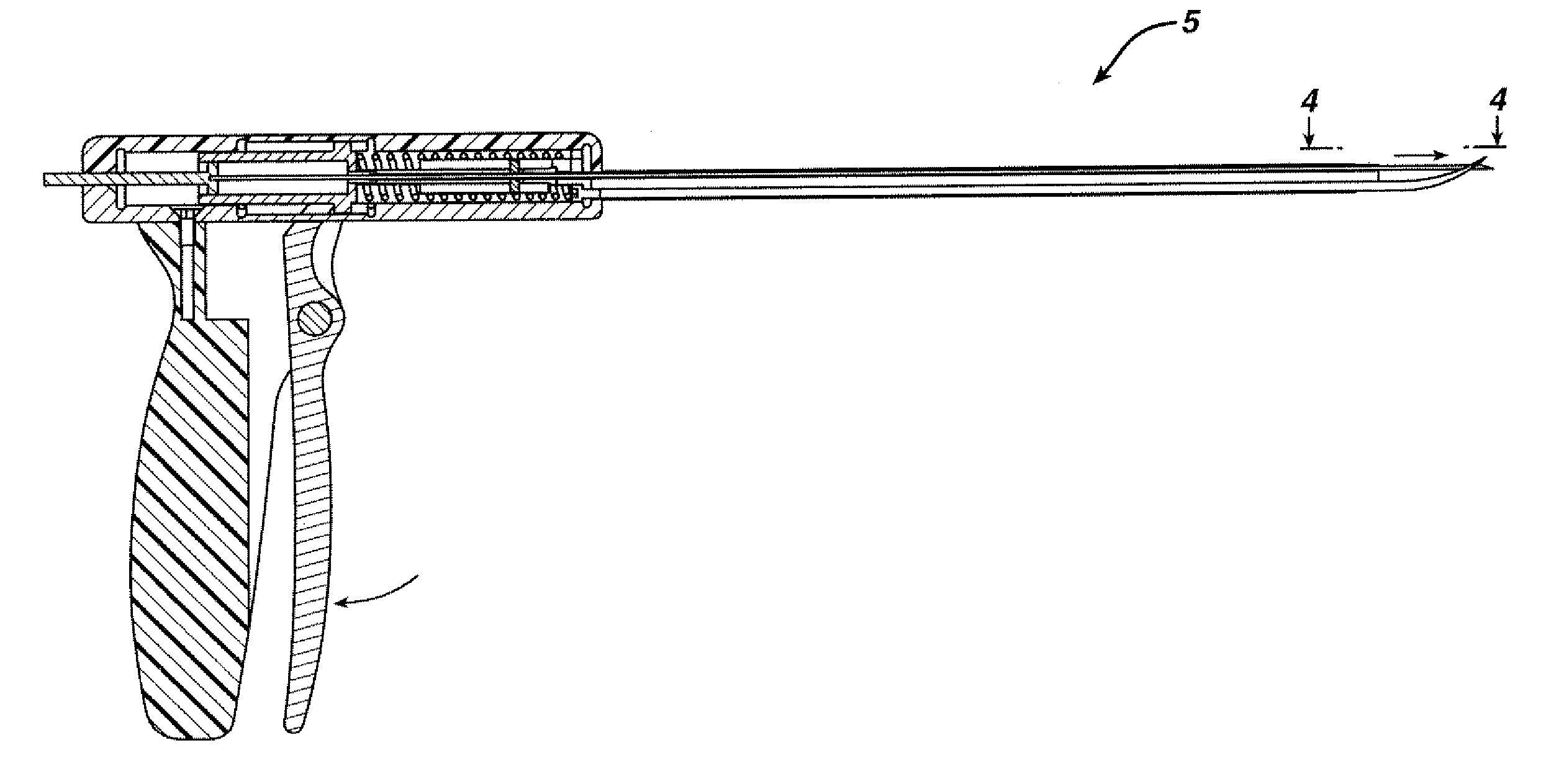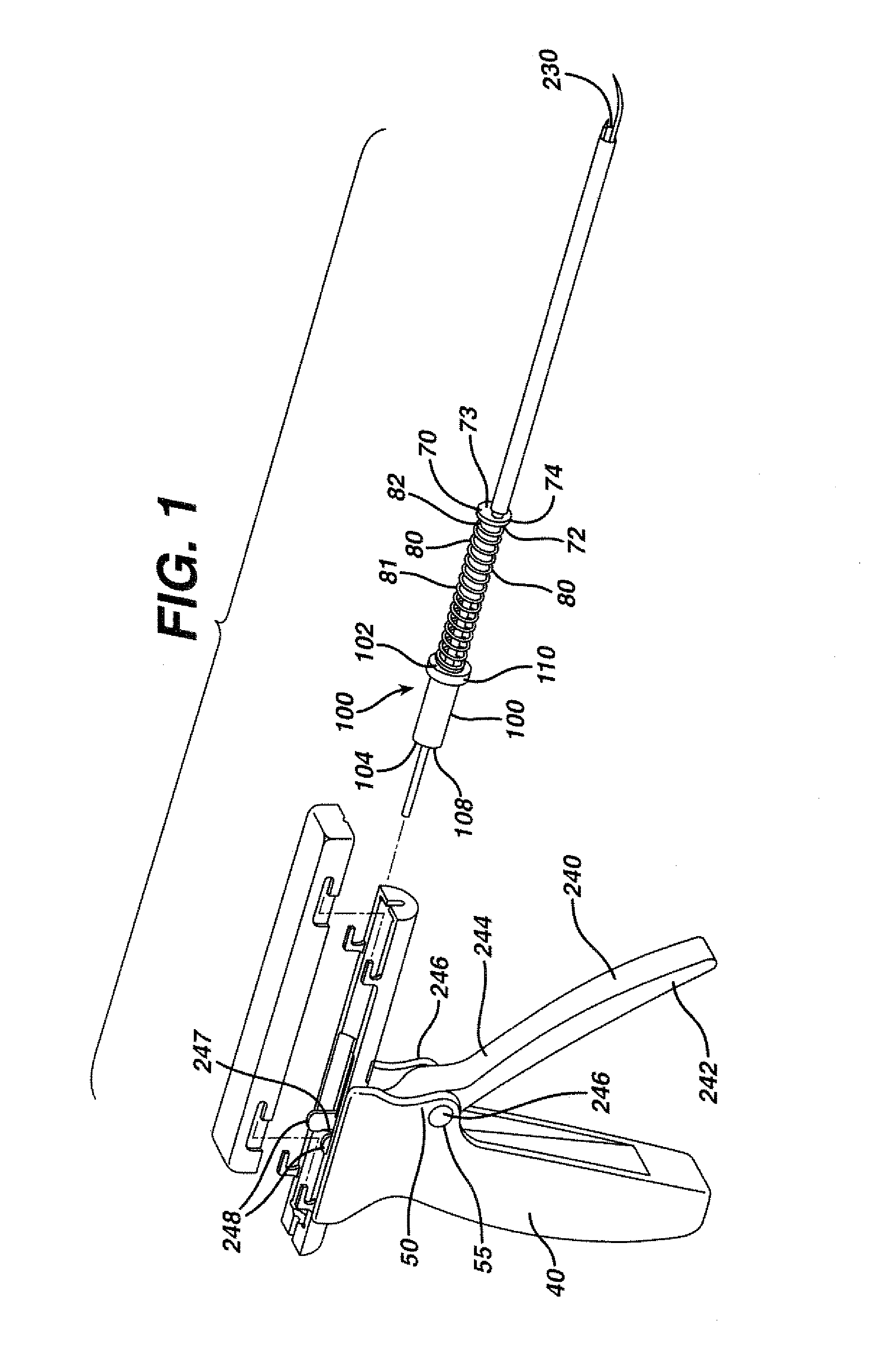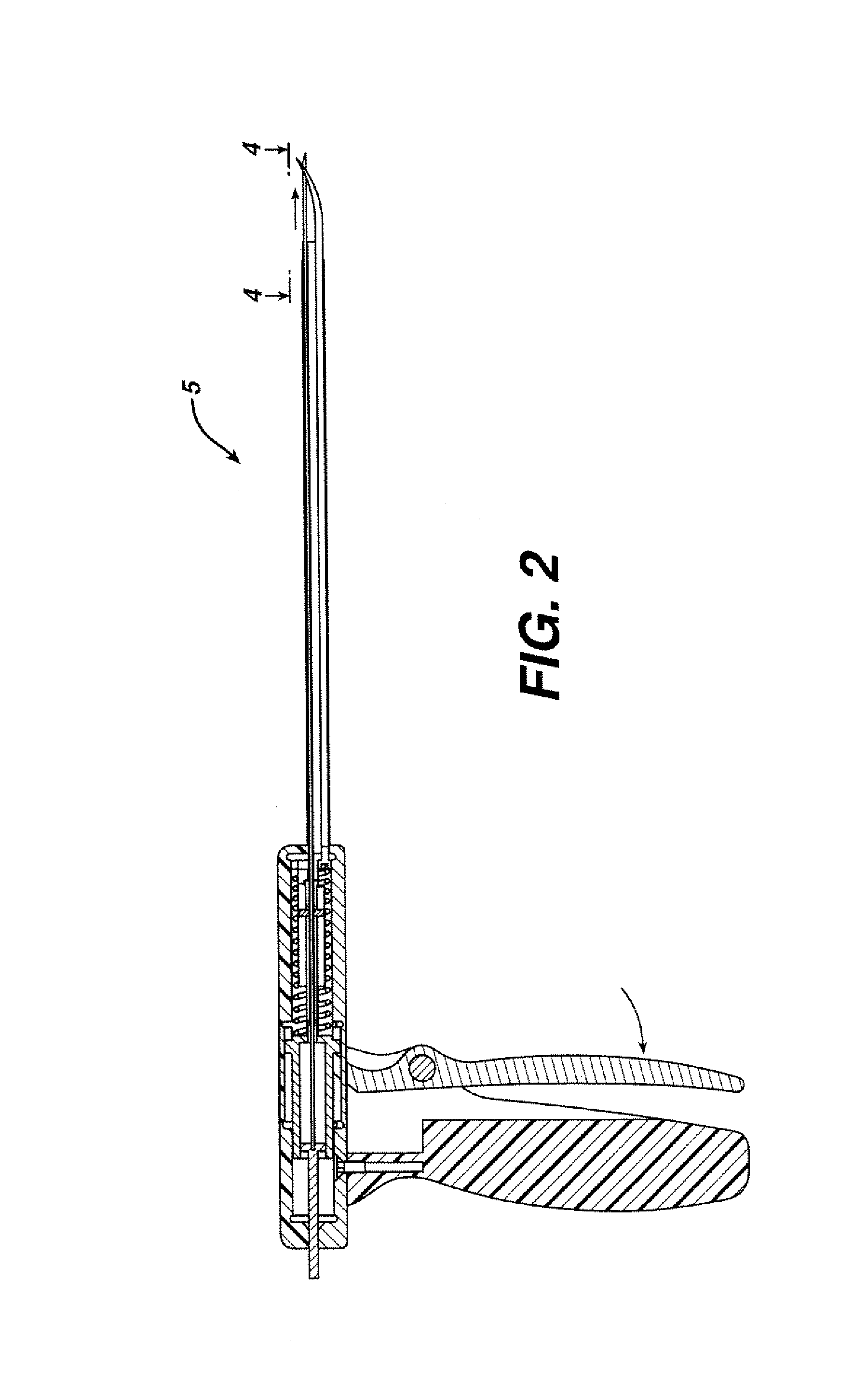Minimally invasive stitching device
a small, stitching device technology, applied in the field of soft tissue repair, can solve the problems of cartilaginous tissue not healing, cartilage damage can occur, deterioration of the articulating surfaces of the bones,
- Summary
- Abstract
- Description
- Claims
- Application Information
AI Technical Summary
Benefits of technology
Problems solved by technology
Method used
Image
Examples
Embodiment Construction
[0014]The meniscal repair device 5 of the present invention is illustrated in FIGS. 1-3. The meniscal repair device 5 is seen to have a hollow frame 10. Frame 10 is seen to have proximal end 12, distal end14, and cavity 15. The frame 10 is also seen to have top section 20 and bottom section 30. Top section 20 is mountable to bottom section 30 via tabs 32 and grooves 22. Extending down from the bottom section 30 is the handle grip 40. Handle grip 40 is preferably hollow and is seen to have inner cavity 42, top 44 and bottom 46. Extending distally from the top 44 are the opposed trigger mounting tabs 50, having pivot pin openings 55. Contained in the distal end 14 of the frame 10 is the opening 18. The opening 18 preferably has a slotted configuration, but may have other geometric configurations as well, and in general will have a configuration capable of accommodating the members the exiting from cavity 15. The tubular member 60 is seen to have proximal end 62, distal end 64, and pas...
PUM
 Login to View More
Login to View More Abstract
Description
Claims
Application Information
 Login to View More
Login to View More - R&D
- Intellectual Property
- Life Sciences
- Materials
- Tech Scout
- Unparalleled Data Quality
- Higher Quality Content
- 60% Fewer Hallucinations
Browse by: Latest US Patents, China's latest patents, Technical Efficacy Thesaurus, Application Domain, Technology Topic, Popular Technical Reports.
© 2025 PatSnap. All rights reserved.Legal|Privacy policy|Modern Slavery Act Transparency Statement|Sitemap|About US| Contact US: help@patsnap.com



